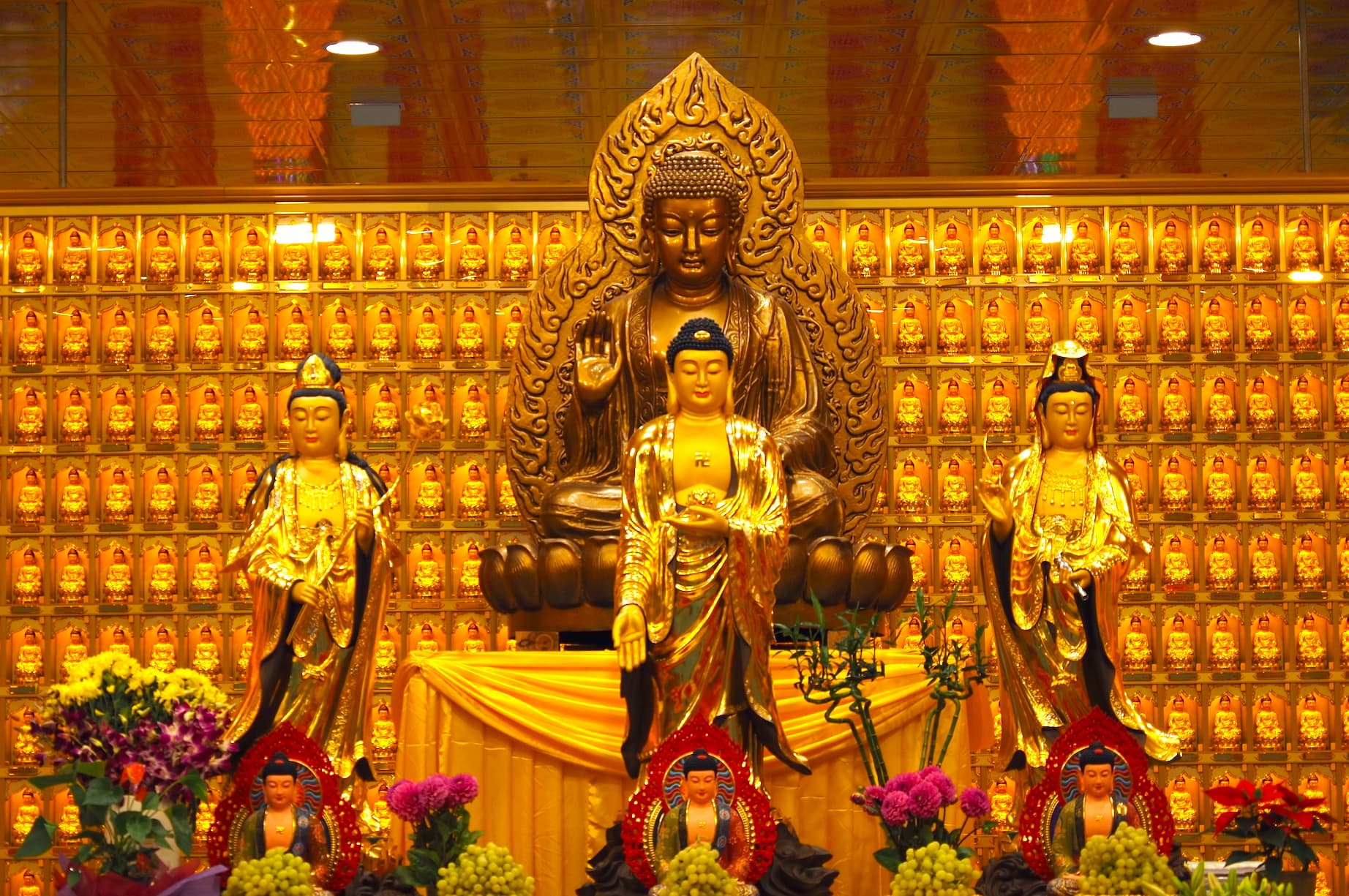
Main Hall
Mahavira Hall
In the Main Hall sits Shakyamuni Buddha with the mudra of fearlessness. The essence of the Buddha’s teaching is the Four Noble Truths: the truth of suffering. the truth of the cause of suffering. the truth of the end of suffering. the truth of the path that leads to the end of suffering.
Mantra: TADYATHA OM MUNI MUNI MAHA MUNI YE SVAHA.









